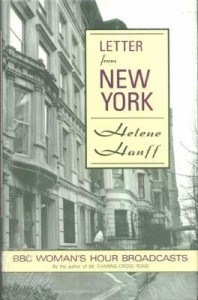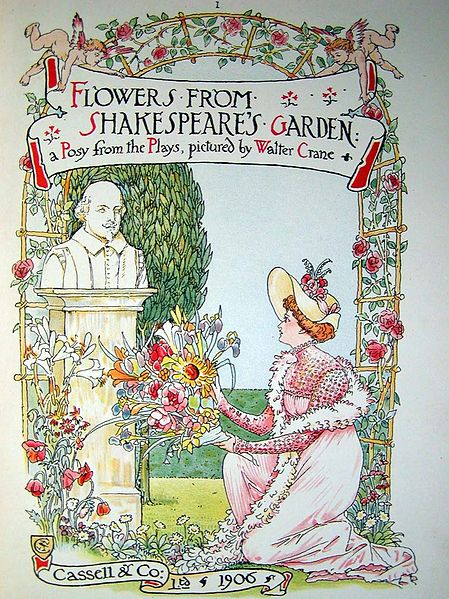 After I treated myself to 84, Charing Cross Road, it was only a matter of time before I reread Helene Hanff’s Letter from New York. This was the book in which I first encountered Miss Hanff—I don’t remember whether I bought it myself or was given it by someone, but I know I read it the year I moved to New York City, and it profoundly influenced my first experiences there. Helene Hanff taught me how to see the quirky and charming characteristics of a neighborhood; she enticed me out of my midtown office building during many a summer lunch hour and sent me scurrying all over Manhattan in search of streets and buildings she’d mentioned.
After I treated myself to 84, Charing Cross Road, it was only a matter of time before I reread Helene Hanff’s Letter from New York. This was the book in which I first encountered Miss Hanff—I don’t remember whether I bought it myself or was given it by someone, but I know I read it the year I moved to New York City, and it profoundly influenced my first experiences there. Helene Hanff taught me how to see the quirky and charming characteristics of a neighborhood; she enticed me out of my midtown office building during many a summer lunch hour and sent me scurrying all over Manhattan in search of streets and buildings she’d mentioned.
Letter from New York is a collection of radio transcripts: a monthly series of five-minute talks Miss Hanff for the BBC Women’s Hour, to share a slice of New York life with London listeners. She describes her building, her neighborhood, her favorite haunts in the city; she tells colorful and wry tales about the customs and opinions of her fellow New Yorkers. Delicious stuff.
Of all the talks, the story I remembered the most clearly was the one about the Shakespeare Garden. If you recall, I kept waiting for that part of Charing Cross Road and only realized halfway through that I’d got the wrong book.
It was in May 1979 that Miss Hanff told her BBC listeners about the corner of Central Park known as the Shakespeare Garden.
It was perched on a small hilltop and reached by high stone steps. It had flower beds blooming in spring, summer, and autumn, and a famous mulberry tree; it had a little stone moat for irrigation, with a small footbridge across it…The first park gardener I met there told me it was begun in the 1900s and was modeled on Shakespeare’s garden in Stratford. A later gardener said that the garden contained every flower mentioned in Shakespeare’s plays. He used to identify them, for ignoramuses like me. And he always pointed out the big mulberry tree grown from a cutting of a tree in Shakespeare’s own garden.
Unfortunately, as Miss Hanff explains, New York City had budget troubles and let the park gardeners go. The Shakespeare garden fell into ruin, such a depressing sight that Helene stopped walking past it; she couldn’t bear to see.
But a young couple who lived near the park couldn’t avoid it. They walked past the abandoned hilltop on their way to work on pleasant mornings. And so, on Sunday in May a couple of years ago, Peggy-the-schoolteacher and John-the-lawyer climbed the stone steps—with buckets of earth and buckets of water and garden tools—and began to dig. They worked all day; and the next Saturday they went back to the hilltop and worked all weekend.
A few neighbors and passersby saw them working and joined them. From then on, the volunteers worked weekends all spring and summer, and all the net spring and summer. And this year the garden is beginning to bloom again.
It’s not the Shakespeare Garden it once was. Peggy told me we can’t get English wildflower seeds over here. So the garden has no cowslips or harebells, and there’s no border of English roses anyore. But we still call it the Shakespeare Garden. And in a city of cliff dweller, it’s a small
Add a Comment



